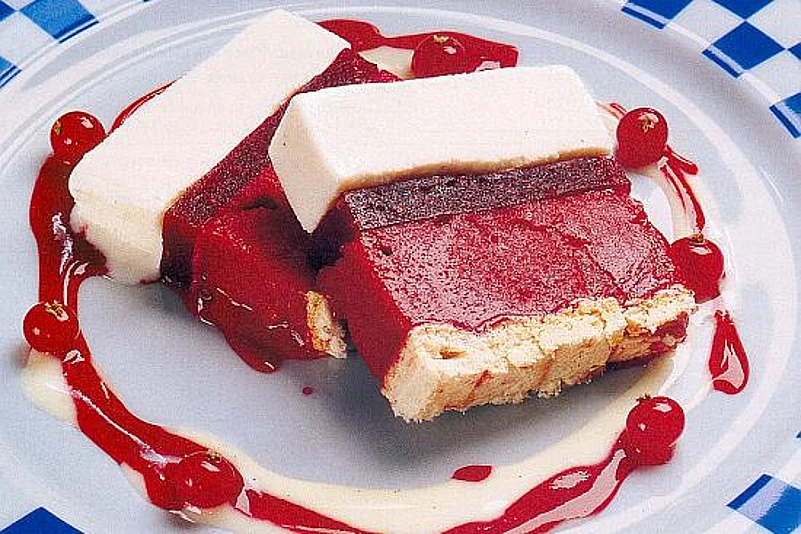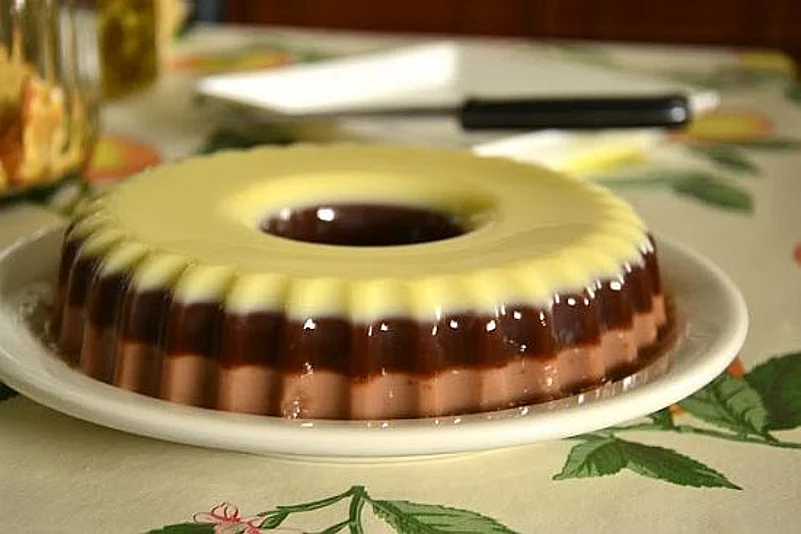What is common to pineapple pastries, baked beans on fried toast squares, Russian Salad and the delicate but deeply satisfying malai cheeni toast? It certainly isn't the provenance or the ingredients that bind this diverse and bizarre menu together. And while the gloopy mayonnaise of the Russian salad and fresh cream on the pineapple pastries and the malai cheeni toast are equally artery clogging, calorific abundance isn't what's being referenced here. If in fact, you can't even quite remember the last time you actually had any of these culinary delights, but have many memories of consuming them at some stage – congratulations. You're over 35 and you grew up in middle class India.
In the rise and rise of exotic world cuisines and the discovery of regional Indian cuisine by the mainstream, things once beloved of many are now on the endangered list. So today, a cassatta (the icecream cake with colours not found in nature) has to be painstakingly tracked and hunted down, while a few decades back, it leapt out to ambush you at every turn. Similarly cream rolls, a staple of school canteens everywhere, can today only be found languishing in foggy glass jars in dodgy stores while bread and butter pudding seems to be served only to invalids in hospital.
Advertisement

Cassatta
So, without getting into Vandana Shiva-esque paeans to forgotten indigenous grains and varieties of rice and the like, what are the sorts of things we have developed this collective culinary amnesia for? Why were alu toasties, trifle pudding and sweet buns (with the luridly coloured fruit peels) all pushed off centre stage and made to melt into the shadows?
Some foods that are now forgotten got there the old fashioned way – they were all homemade treats that simply became obsolete. With packaged and processed foods like biscuits, cakes and savoury snacks easily accessible at even the lowest price points – it's hard to think of a reason why meetha chawal (rice sweetened with sugar or gur) or rainbow sandwiches layered with tomato ketchup and green chutney, or pineapple, grape and cheese sticks would be considered a wise investment of time and taste. Also, as the interest in eating, cooking, sourcing and discussing food reaches epidemic proportions, things that aren't terribly photogenic are not likely to come back into favour any time soon. Since it's hard to glam up a cheeni paratha or a choora (a roti with ghee, crushed hot and sprinkled with sugar), it's never going to be trending hashtagged kidstreat.
The 70s and 80s presented a standard set of ingredients for cooking non-Indian ("you can call me conti") food at home. Since mince, potatoes and vegetables were freely available and making mayonnaise required little more than a recipe and elbow grease; the holy trinity of the Indian continental table was born – shepherd's pie, cutlets and Russian salad. There were other favourites that used ingredients easily found in Indian kitchens and massaged slightly to appeal to the palate – meat loaf, fish pie and devilled chicken amongst them. The home cook relied on ingenuity and technique (including some nifty vegetable surgery) to prepare dishes slightly different from these. A typical example of same same but different was the Bird of Paradise salad – essentially a Russian salad with the addition of a bird neck in the form of a carved carrot emerging from one end and some coriander sprigs as a birds tail emerging from the nether one.
However, India's signal contribution to world cuisine was none of the above – it was the artist formally known as "The Bake". It consisted of a variety of vegetables, parboiled, drenched in becahmel sauce, buried under an avalanche of cheese and – you guessed it – baked. In restaurants this same dish was more grandly presented as vegetable au gratin – but in homes across the length of this country, it was and will always be known simply as "The Bake". In fact so popular was this to become, that it began to be served (possibly as a symbol of the sophistication and world weariness of the host), even with Indian food. So it wasn't at all unusual to have a meal that featured matar paneer, chicken curry, alu gobi, dal fry and "the Bake".
Advertisement

Jelly Custard Pudding
The paucity of ingredients and exposure that marked this period also dogged the dessert trolley. So eggs, jelly, custard, fruits, and cakes were diced and sliced and arranged in an ascending order of complexity, giving rise to a dessert dynasty that ruled India for decades. Jelly custard, fruit custard, fruit cream, caramel custard, pineapple upside down cake and trifle pudding are all proud representatives of that once glorious family. Today they are almost extinct, popping up only as nursery treats or on the menus of old colonial clubs or railway canteens, while the tiramisus, cheesecakes and molten chocolate puddings sashay and swish down the dessert ramp.
So, the next time you spread some Brie on your cracker, spare a thought for the Monaco biscuits with the scrambled eggs that preceded it on the evolutionary timeline. And remember that floating islands dessert with egg white islands lived a long honourable life and died to make way for today's meringues with mascarpone and fruit.
Whether with battles or food, remembering the past is the only way to honour it.



















